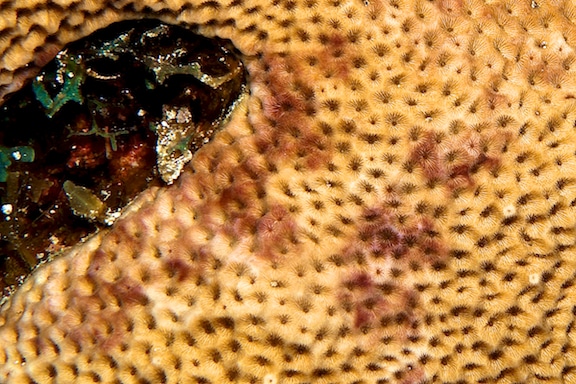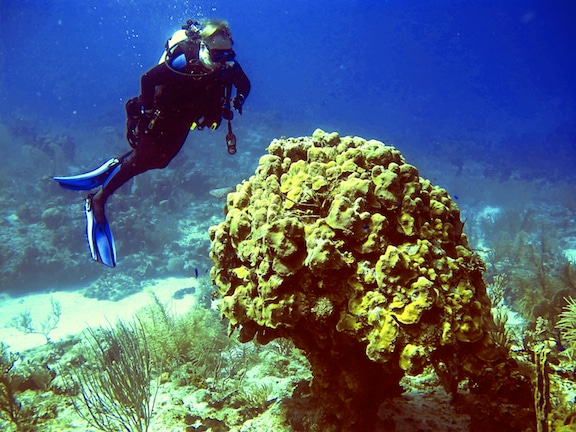Over the past few decades there has been a rapid decline in the health of shallow water scleractinian corals (stony or hard corals). Simultaneously, there has been a steady increase in the number of coral diseases being reported. Many of these diseases have been identified by field characteristics – the color of the affected tissue, the shape of exposed skeleton, advancing patterns of tissue loss, or the presence of unusual structural features – rather than by the agent causing the disease. For this reason, coral diseases have acquired names like black-band disease, red-band disease, dark spots, white pox disease and white plague. Unfortunately, there have been relatively few scientific studies that have conclusively described the structural and cellular (morphological) changes underlying these different syndromes, or even the causes of the various changes.

Dark spot syndrome is a disease that has been identified most frequently in three corals found in the Caribbean, including Siderastrea siderea, Stephanocoenia intersepta and Montastraea annularis. The syndrome appears as dark, often purple, black, or brown circular or ring-shaped spots that are scattered across the surface of an affected coral. Tissue loss and mortality are not always associated with these spots. The cause of the discolorations is unknown, as are the underlying morphological changes. Factors that scientists think may be responsible for dark spot syndrome include an increase in zooxanthellae pigments, an endolithic fungi (one living inside coral crevasses), a general stress response, or accumulations of zymogen (enzyme) granules acting as a defensive mechanism against endolithic cellular invasion. Recently, similar dark spots have been observed in other coral species, in particular lettuce corals, Agaricia agaricites.

Dr. Matti Kiupel is a board certified veterinary pathologist who has spent most of his career working to understand infectious diseases in vertebrate species, mainly in mammals. As an avid scuba diver, he has been deeply concerned about the decline of corals and the emergence of widespread disease syndromes. Gladly following an invitation by the Living Oceans Foundation, he is participating in this expedition to collaborate with known experts in coral biology who are on the research team, including Drs. Andy Bruckner, Bernhard Riegl and Judy Lang. Together they are working to shed more light on the morphological basis of dark spot syndrome in various coral species and to possibly determine the cause of the syndrome.

During the expedition in the Inaguas, Dr. Kiupel will collect samples of healthy and affected corals for future microscopic examination in his laboratory at Michigan State University. This project is possible due to the multi-disciplinary research team assembled by the Living Ocean Foundation and with the support of the Bahamian government that provided the permits for collecting diseased and normal coral samples.
Written by Dr. Matti Kiupel
(Photo/Images by: 1 – 3 Ken Marks)
To follow along and see more photos, please visit us on Facebook! You can also follow the expedition on our Global Reef Expedition page, where there is more information about our research and our team members.